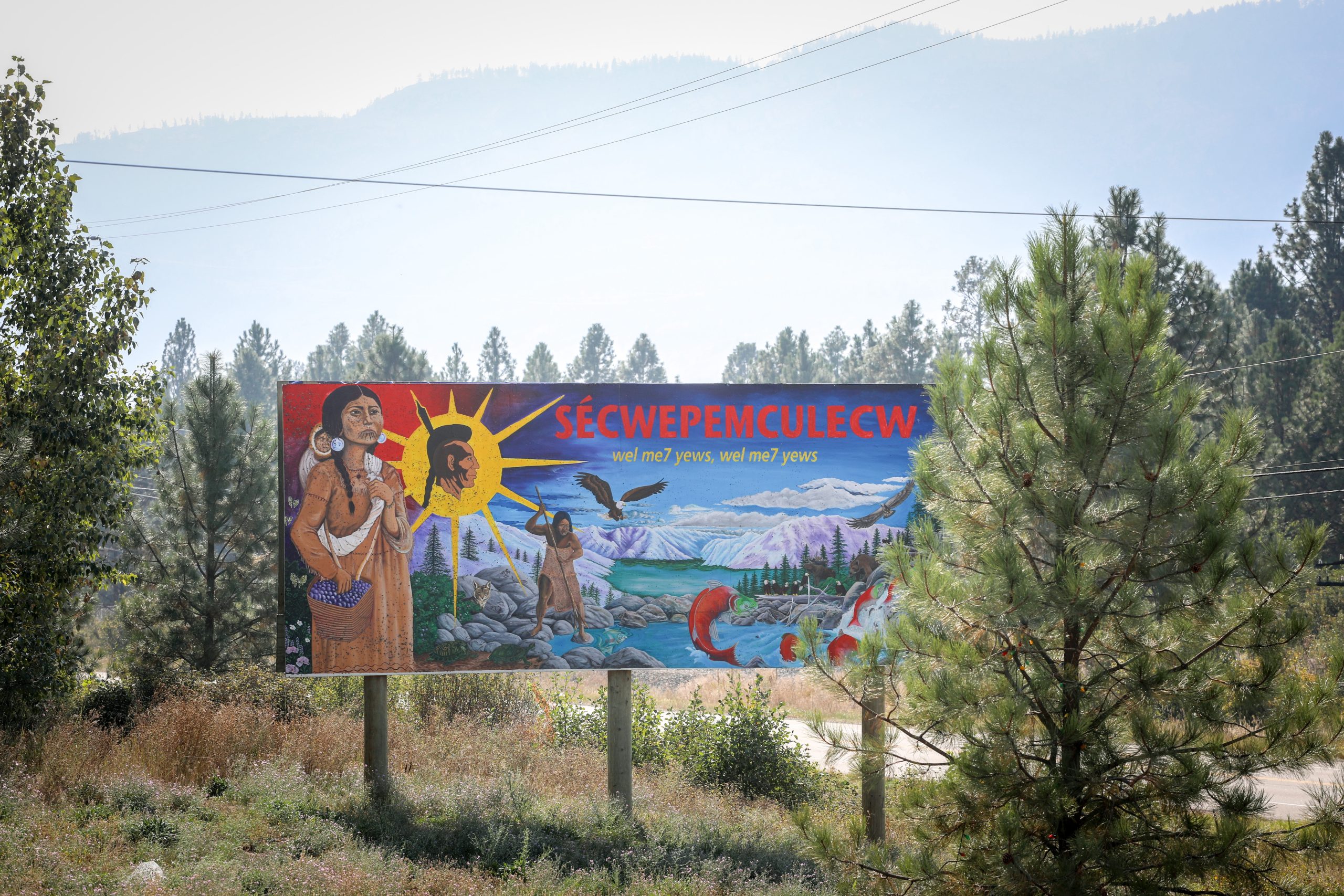Animated short ‘Pow!’ tells the story of Indigenous Youth learning to appreciate culture
The film by Cowlitz writer and comedian Joey Clift, inspired by a true story at a powwow, is set to screen at VIFF on Oct. 12 before online release later this year
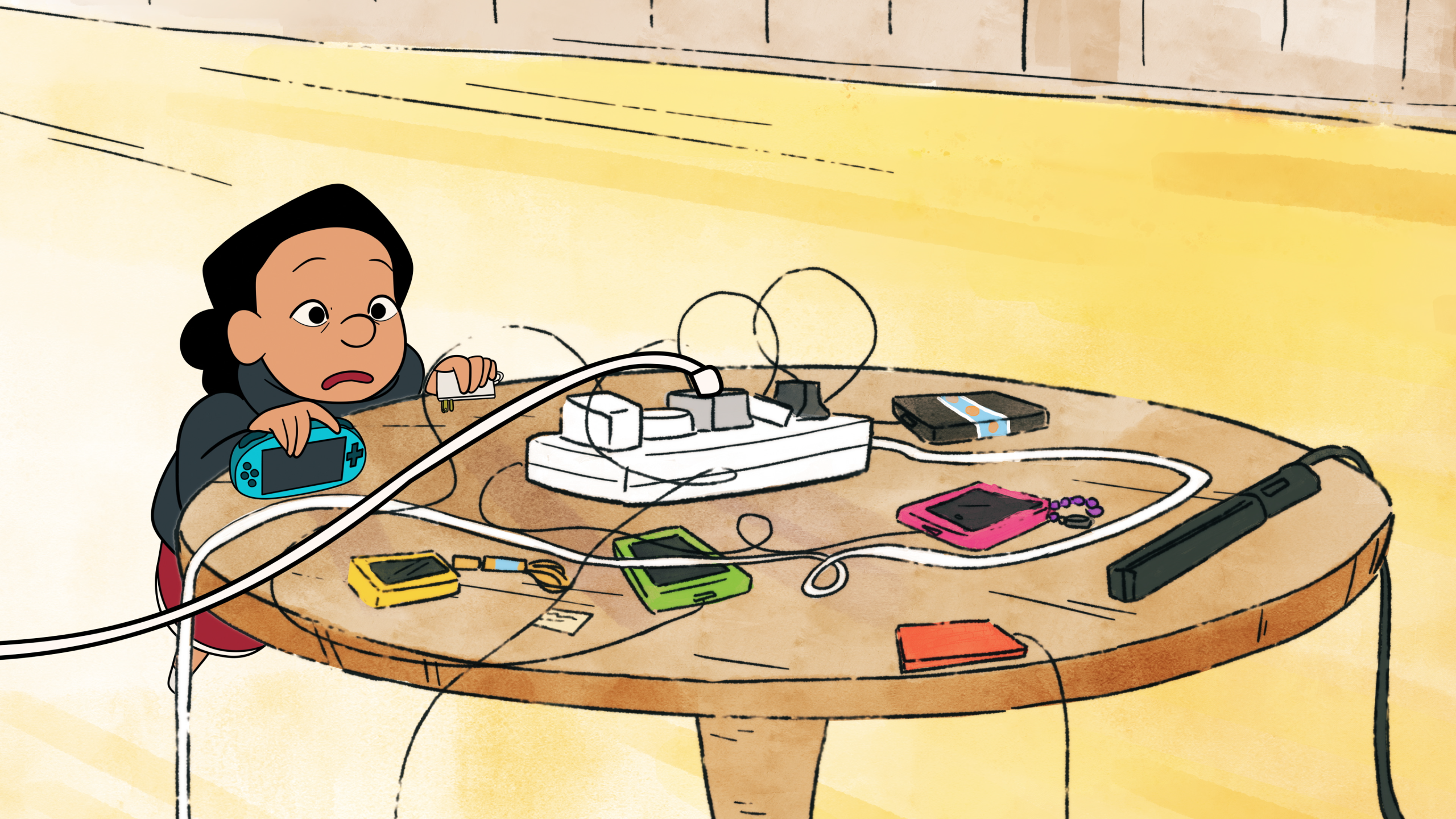
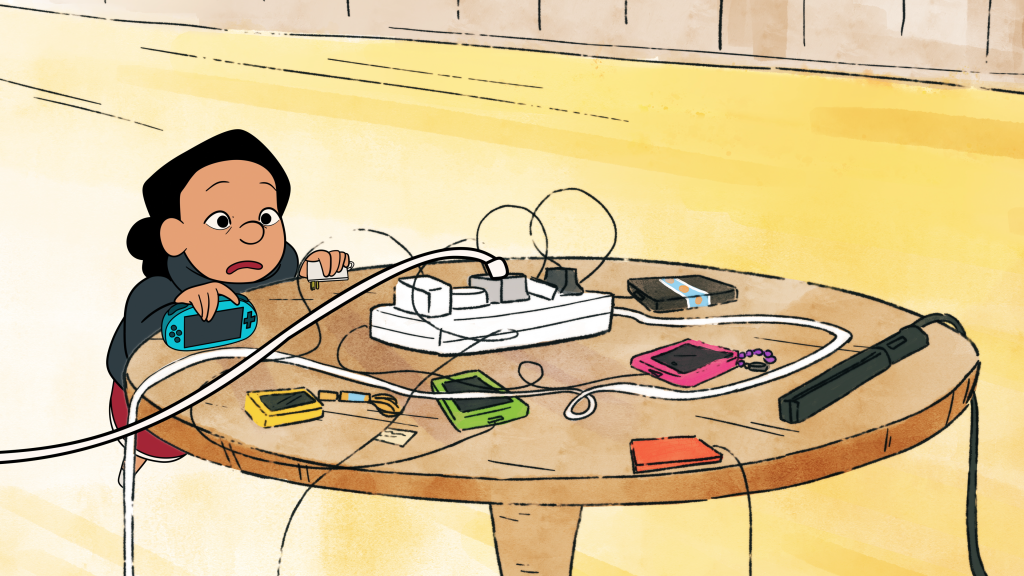
As a child, filmmaker Joey Clift recalls being “dragged” to powwows by his insistent mother — even though he would have rather stayed home.
Despite his resistance, he soon grew to appreciate the events as a show of the thriving culture that Indigenous people have worked to keep alive.
That experience is the inspiration behind a new animated comedic short film titled Pow! that’s been premiering at film festivals across “Canada.” It’s set to screen at the Vancouver International Film Festival on Oct. 12.
With a runtime of just over eight minutes, Pow! is packed with fun imagery as it follows Jake, a young Indigenous boy who prefers playing his video games over being present at a powwow.
Clift, who is from Cowlitz Indian Tribe in “Washington,” said he gleaned inspiration for the story not only from his own experiences, but others in his life, including Elders.
“This is the semi-true story of my very first powwow,” Clift narrates in the film trailer.
“Many nations united by music, dancing, and that delicious frybread. But of course all I wanted to do was sit right there on the bleachers and play video games.”
Throughout the film you see Jake’s struggles to charge his gaming device and the eventual wise words from his grandmother who explains the importance of celebrating after years of their ceremonies being outlawed.
It’s a show of resilience, family and celebrating culture through different animation styles that showcase the colours, movement and humour at the powwow.
“Native culture doesn’t have to be rooted in the past, it can be in the present,” Clift told IndigiNews.
“And you can be somebody in the modern day and a contemporary person, while also loving your culture.”
Differences in style
Some of Clift’s favourite cartoons inspired the story he chose to tell, with Looney Tunes and Pixar shorts being among those that he loved.
“This was my opportunity to basically take the cool cartoons that I loved in my youth and put them in a very contemporary, native setting,” he said.
The team at FlickerLab animated Pow! to feature three different animation styles, with 16-bit pixel art — reminiscent of Super Nintendo and games like Earthbound and Final Fantasy — beginning the short.
“That, to me, felt like a really great touch point to kind of see Jake’s POV … on his culture as very gamified,” Clift says.
Before entering the powwow, Jake and his family arrive at the tribal centre which features a totem pole outside. Both pieces are inspired by real structures that Clift grew up seeing while attending the Coast Salish powwows near him. He received permission to use the designs in the film and this adds another layer of appreciation and accuracy for Indigenous representation.
Clift adds that to see the Indigenous representation through the 16 bit pixel art style lens was something that he wishes he had as a kid.
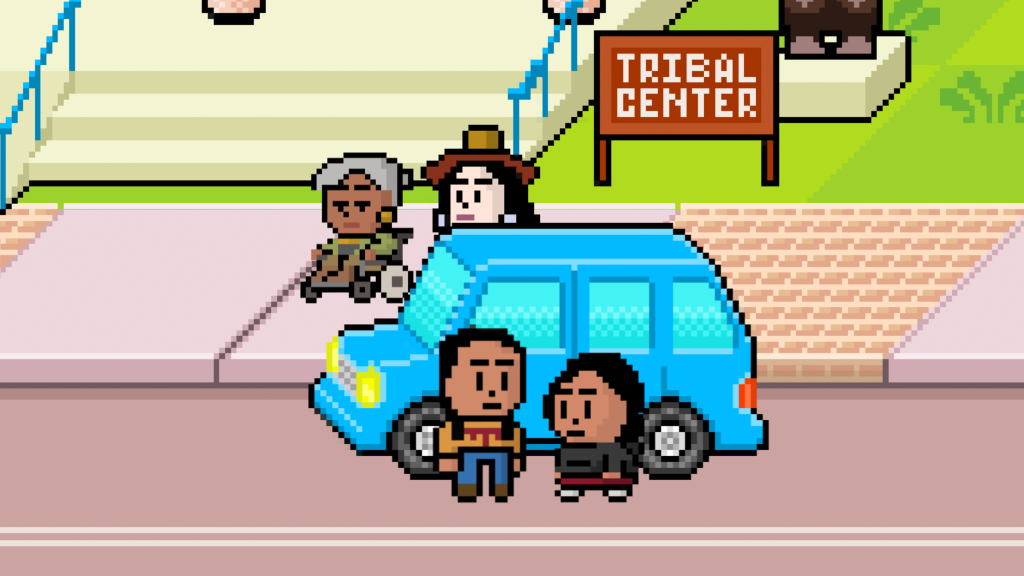
Ledger art, which began as a form of documentation used by Plains Indigenous communities, is used to illustrate the grandmother character’s stories.
To Clift, this style showcased the “nuanced and layered” view of the grandmother’s culture.
Lastly, 2D animation is used to portray a majority of the short through the parents’ view of their culture with vibrant colours that Clift describes as an “anime / western animation hybrid space.”
Each style played a role in telling the story, with meaning behind each choice to portray the differences in each person’s view and the impact it can have on them and the audience.
Layered characters
Jake loves his video games and through his pursuit to charge his gaming console finds appreciation for the powwow he attends.
His grandmother’s words hit home to Jake as she recalls her past through time at residential “school” and later being an activist — as shown through flashbacks in the ledger art style.
Clift used real documents from the Alcatraz occupation and the Treaty of Fort Laramie, along with audio from the Dakota Access Pipeline protests to showcase the important moments to Indigenous people.
“For that sequence, I wanted it to feel very lived in. And one of the ways that I did that is using actual documents that are important to North American indigenous activism,” Clift said.
“I felt like including actual audio from the Standing Rock Dakota Access Pipeline water protectors protests was just a hugely important part to me, of making sure that that felt real as possible.”
Through a months-long process Clift searched for audio clips and received permission to use the ones that can be heard in the film.
“I guess it’s, in a big way, it’s just me trying to kind of honor the native activists who through their work, we can participate in our culture now, so it’s sort of honoring native activism just kind of in spirit throughout the whole piece,” he said.
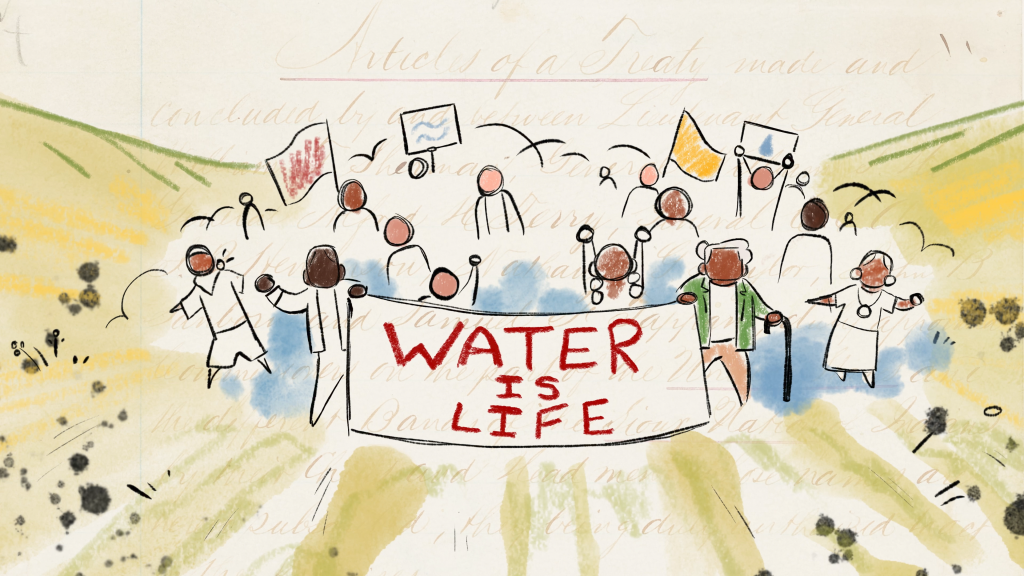
The mother and father in the film are shown to be from different nations which helped Clift showcase the variety of people who come together to celebrate at a powwow.
“I try to mix it up as much as possible and incorporate people from different tribes, just so that there’s a variety of indigenous cultures on screen and I also think it’s just a cool way to just show a bunch of different cultures,” Clift said.
A team collaboration
With a full Indigenous voice cast and a largely Indigenous crew, the film was collaborative, Clift said. There are few — if any — American animations depicting powwows and that gave Clift the inspiration to showcase the imagery and noises that can be experienced at a powwow.
“We kind of got to define what native animation meant for us, and it was really cool to just kind of explore that as a team,” Clift said.
There were plenty of helping hands and Clift even brought on experts who could help with the accuracy of the powwow visuals.
Powwow dancers showcased their respective dances which allowed the animators to use the footage and ensure the movement was accurately portrayed in Pow! A culture keeper from Clift’s tribe helped ensure the Coastal Salish elements were accurate while character designer and consulting producer, Morgan Thompson, used her knowledge to ensure the Cherokee elements were also accurate.
Clift explained his views for each character and the effort put into every element of their designs was intentional. Thompson brought the vision to life for the characters that made such an impact throughout the whole film.
Part of the sound team include Jeff Carpenter and Jordan Kamalu who worked to bring the sound of the powwow to life with the sizzle of fry bread to the drumming behind the dancing.
“I really owe this team for helping shape the message visually, but also, just thematically,” Clift said.
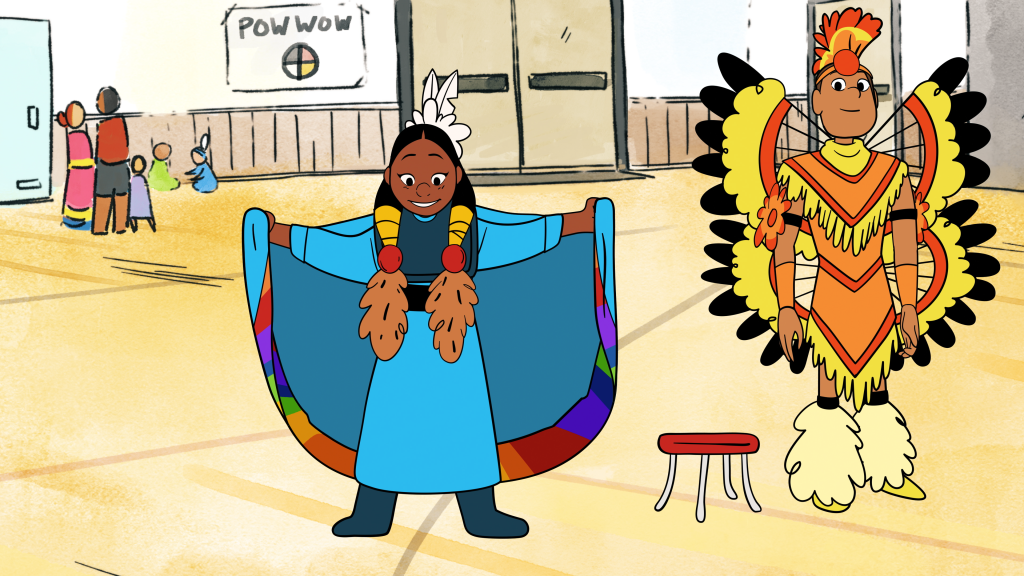
Clift said he hopes the film can serve as a conversation starter and help with understanding Indigenous culture.
“We can be contemporary, we can be traditional people rooted in our culture and we can also love Nintendo Switch. You don’t have to choose one or the other. We have feet in both worlds,” Clift said.
Clift said Pow! is set to be released online later this year.
Author
Latest Stories
-
‘Bring her home’: How Buffalo Woman was identified as Ashlee Shingoose
The Anishininew mother as been missing since 2022 — now, her family is one step closer to bringing her home as the Province of Manitoba vows to search for her
-
Animated short ‘Pow!’ tells the story of Indigenous Youth learning to appreciate culture
The film by Cowlitz writer and comedian Joey Clift, inspired by a true story at a powwow, is set to screen at VIFF on Oct. 12 before online release later this year
-
‘No trust’: Neskonlith members seek answers as tensions climb amid firings, lawsuit
Indigenous Services confirms complaint filed, as Secwépemc community embroiled in allegations of election fraud, ‘civil conspiracy’



